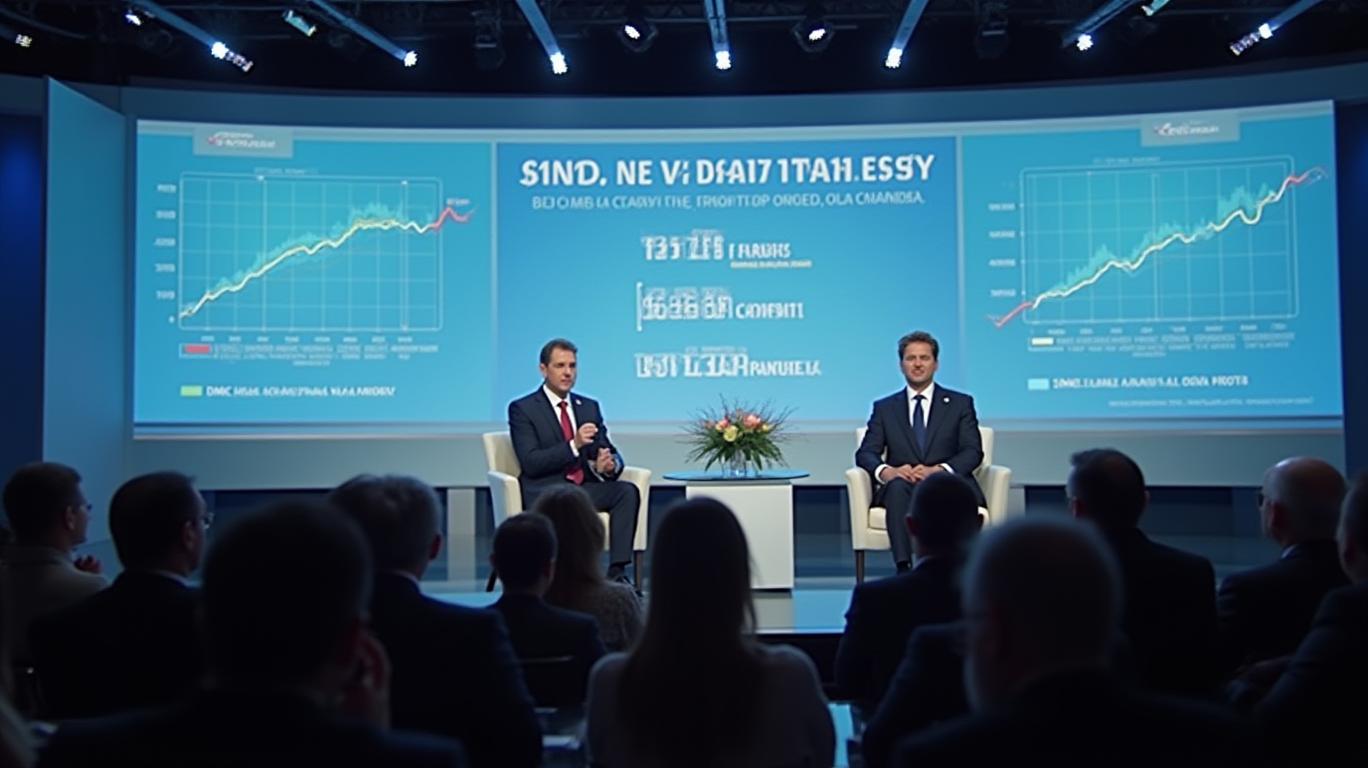Moog Navigates Mixed Results in Q2: Earnings Decline Amid Strategic Shifts and Trade Challenges
Moog Inc. (NYSE: MOG.A) reported mixed financial results for its fiscal second quarter ended March 29, 2025, with revenue rising modestly while adjusted earnings per share (EPS) declined due to the expiration of a one-time tax benefit. The company reaffirmed its full-year 2025 guidance, signaling confidence in its defense and aerospace growth drivers despite margin pressures and tariff risks.

Key Takeaways from Q2 2025 Results
- Revenue Rose 0.5% to $935M, driven by growth in military and commercial aerospace segments.
- Adjusted EPS Fell 12% to $1.92, as the prior-year’s 150-basis-point benefit from the Employee Retention Credit (ERC) vanished.
- Free Cash Flow Improved to $2M, up from -$84M in Q2 2024, aided by lower working capital needs.
- Guidance Reiterated: Full-year sales remain at $3.7B, with adjusted EPS of $8.20 and a 50% free cash flow conversion target.
Segment Performance: Defense Strength Offsets Commercial and Industrial Headwinds
Moog’s results reflect a bifurcated landscape across its key segments:
Military Aircraft (6% Sales Growth to $214M):
The FLRAA (Future Long-Range Assault Aircraft) program’s ramp-up propelled this segment, with operating margins surging 280 basis points to 11.1%. CEO Pat Roche emphasized this as a “key growth driver,” underscoring Moog’s position in next-gen defense systems.Commercial Aircraft (4% Growth to $216M):
Strong aftermarket demand offset production delays in business jets and narrow-body aircraft, though operating margins dipped 20 basis points to 11.8%. CFO Jennifer Walter noted ongoing challenges with OEM timelines but highlighted aftermarket resilience.Space and Defense (1% Growth to $270M):
Broad defense demand supported sales, but margins collapsed 370 basis points to 12.1% due to the loss of the ERC benefit. Adjusted margins here fell 330 basis points, a stark contrast to the prior year’s inflated performance.Industrial (-7% Sales to $234M):
Strategic divestitures and product exits weighed on revenue, though simplification initiatives boosted operating margins 50 basis points to 11.6%. Management framed this as a deliberate portfolio shift to focus on higher-margin aerospace and defense opportunities.
Margin Pressures and the ERC Effect
The most significant drag on earnings was the expiration of the 2023 ERC, which had inflated Q2 2024 margins by 150 basis points. This caused:
- Reported Operating Margin to drop to 11.7% (from 12.0%).
- Adjusted Operating Margin to fall to 12.5% (from 13.6%), excluding restructuring costs.
Excluding both the ERC and restructuring charges, core operating margins improved 40 basis points, signaling operational efficiency gains. The CEO and CFO stressed that Moog’s underlying performance was robust, with record sales and stable backlog of $2.5B.
Tariff Risks and Guidance Reiteration
Moog faces a potential $10–$20M hit to operating profit in 2025 from tariffs, particularly on Chinese imports. Management plans to mitigate this through pricing adjustments and supply chain diversification.
Despite these risks, the company reaffirmed its full-year guidance, citing:
- Defense Program Momentum: FLRAA and other military contracts.
- Free Cash Flow Discipline: Q2’s $2M result reflects improved working capital management.
- Backlog Stability: The $2.5B backlog suggests sustained demand across its core markets.
Investor Considerations
- Growth Catalysts: Defense programs like FLRAA and the U.S. Air Force’s modernization push are key.
- Margin Risks: The ERC’s loss and tariff pressures could limit near-term EPS growth.
- Valuation: At current levels, Moog trades at ~14x 2025 adjusted EPS estimates, below its five-year average of ~16x.
Conclusion: A Resilient Play on Defense Growth, with Near-Term Headwinds
Moog’s Q2 results highlight its dual challenges and opportunities: it’s executing well in defense and aerospace, but margin pressures from one-time benefits and external risks cloud the near-term outlook. The reaffirmed guidance and improved cash flow suggest management’s confidence in navigating these hurdles.
Investors should focus on:
- Defense Program Execution: FLRAA’s progress and military contract wins.
- Margin Recovery: Whether core operational efficiencies can offset the ERC loss.
- Tariff Mitigation: How effectively Moog manages trade-related costs.
With a stable backlog and a focus on high-margin segments, Moog remains a compelling long-term play on aerospace and defense spending. However, the stock’s valuation and execution on its guidance will be critical for near-term outperformance.
In a sector where precision engineering and geopolitical spending are key, Moog’s resilience in Q2 underscores its strategic focus—but investors must weigh today’s headwinds against tomorrow’s growth.

_442a2dcc1749832873286.jpeg)
_e68fac6d1749831664430.jpeg)







